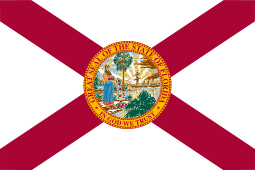Seaboard System Railroad
.png) | |
|
A Seaboard freight train crosses the James River in 1985. | |
| Reporting mark | SBD |
|---|---|
| Locale | Southeastern United States |
| Dates of operation | December 29, 1982–July 1, 1986 |
| Predecessor | Seaboard Coast Line Industries (Family Lines) |
| Successor | CSX Transportation |
| Headquarters | Jacksonville, Florida |
The Seaboard System Railroad, Inc. (reporting mark SBD) was a short-lived former US Class I railroad that was created after the consolidation of the Family Lines System railroads (notably the Louisville & Nashville, Seaboard Coast Line, and Clinchfield) on December 29, 1982. Under the Family Lines era, the railroads shared common ownership but used different names when conducting business. On July 1, 1986, the Seaboard System renamed itself as the CSX Transportation and absorbed the Chesapeake & Ohio Railway on August 31, 1987 which ended the CSX Corporation's shared ownership of the Seaboard System and Chessie System railroads.
History
The Seaboard System's roots trace back to SCL Industries, a holding company created in 1968 that combined the SCL's subsidiary railroads into one entity. In 1969, SCL was renamed Seaboard Coast Line Industries. Known as the Family Lines System, this entity adopted its own logo and colors, but each railroad maintained its own identity. Over time, this caused confusion among customers. In comparison to the neighboring Chessie System, which had three railroads, the Family Lines had five railroads.[1] In 1971 SCL bought out the remaining shares and made the Louisville & Nashville a subsidiary.
On November 1, 1980, the holding company CSX Corporation was created after the merger of Seaboard Coast Lines Industries and Chessie System. This now simplified ownership of both the Chessie and Seaboard's railroads under one holding company while still keeping their identities separate. On December 29, 1982, the Seaboard Coast Line and Louisville & Nashville (under the Family Lines entity) were merged to form the Seaboard System Railroad, Inc. This was the first step under the CSX Corporation holding company to combine all railroads into one railroad.[1][2]
Considered as a "temporary railroad", the Seaboard System quickly began to merge away the smaller railroads that were owned under the Family Lines System entity, as well as to simplify equipment and management alongside the Chesapeake & Ohio/Baltimore & Ohio/Western Maryland (Chessie System) railroads. This included the Georgia Railroad (1983), South Carolina Pacific Railway (April 30, 1984), Louisville, Henderson & St. Louis Railway (July 1984), Gainesville Midland (1985), Atlanta & West Point Railroad (June 1986) and the Columbia, Newberry & Laurens (June 1986).
After the Seaboard System simplified itself as one railroad, it was renamed CSX Transportation on July 1, 1986. On April 30, 1987, the Baltimore & Ohio railroad was merged away into the Chesapeake & Ohio. Finally, on August 31, 1987, the Chesapeake & Ohio (still under the Chessie System entity for corporate reasons) was merged into CSX Transportation. All the major railroads under CSX Corporation were now one company.[3] (The Western Railway of Alabama would remain an operating subsidiary until December 2002, when it was finally merged into CSX.[4])

Equipment colors and painting
Even before the creation of the Seaboard System, locomotives began to receive a simplified paint scheme of the Family Lines. However, only the iron-grey, red, and yellow colors were actually recycled, in combination with a completely redesigned logo featuring a coupled variation font of ITC Eras Demi. The first locomotive to be decorated with the new Seaboard System paint scheme was UCETA GP16 #4802 in October 1982. Because the merger did not occur until December, locomotives after October 1982 were to receive the Seaboard System paint scheme with the existing railroad's reporting marks applied.[1][3]
When the merger officially took effect on January 1, 1983, all former reporting marks were to be either removed or patched with SBD initials. Shortly before taking delivery of the L&N specified EMD SD50's, Seaboard adopted a Swis721[5] type font for reporting marks and numbers, instead of the customized Seaboard Coast Line lettering seen on pre-1983 repaints. To simplify its locomotive roster and meet Chessie System specifications, Seaboard introduced a numbering system that partially became meshed within the Chessie System locomotive fleet, and removed any existing Mars Lights or Gyralights from locomotives. Any new locomotives purchased by Seaboard would be built to meet Chessie specifications; of which only three, EMD SD50, EMD MP15T and GE B36-7, were actually ordered.
Operating divisions
This section lists the operating divisions of the Seaboard System as of January 1, 1985:[6]
- Atlanta
- Birmingham
- Corbin
- Evansville
- Florence
- Jacksonville
- Louisville
- Mobile
- Nashville
- Raleigh
- Savannah
- Tampa
References
| Wikimedia Commons has media related to Seaboard System Railroad. |
- 1 2 3 Solomon, Brian (2005). CSX. MBI Publishing Company. pp. 63–67. ISBN 0-7603-1796-8.
- ↑ Griffin, William (2004). Seaboard Coast Line & Family Lines. TLC Publishing. pp. 124–136. ISBN 0-9766201-0-3.
- 1 2 Moody's Transportation Manual, 1992, pp. xxii-xxiv, 421-428, 451
- ↑ Surface Transportation Board, CSX Transportation, Inc.--Corporate Family Merger Exemption--The Western Railway of Alabama, December 26, 2002
- ↑
- ↑ Seaboard System Railroad: List of Stations and Yards. Office of General Manager: Terminal Station Manager. January 1, 1985.
- CSX Transportation Family Merger Tree
- UCETA GP16 roster
- UCETA GP16 paint
- EMD "40" Series models
- EMD "50" Series models
- GE B36-7 Roster
.jpg)
